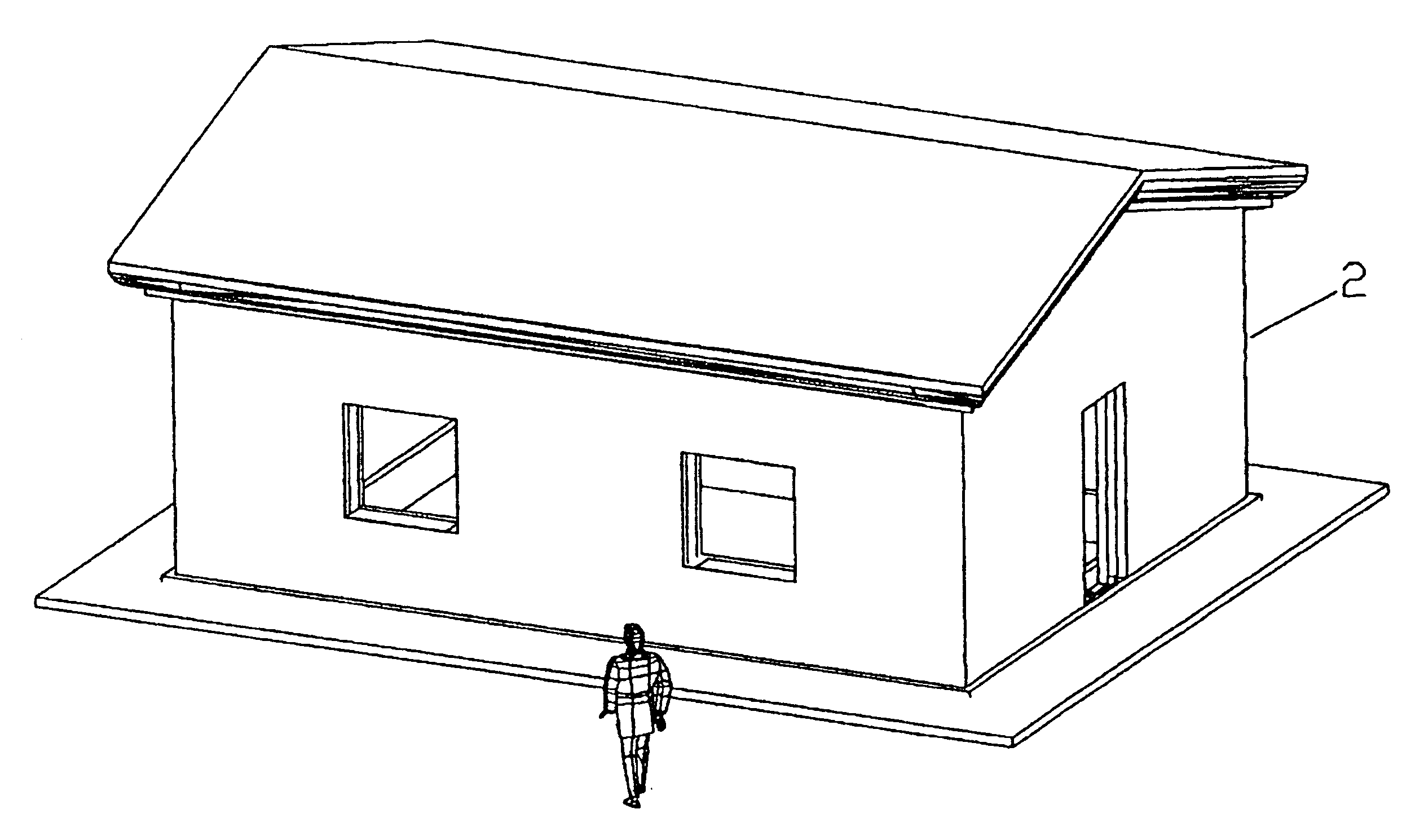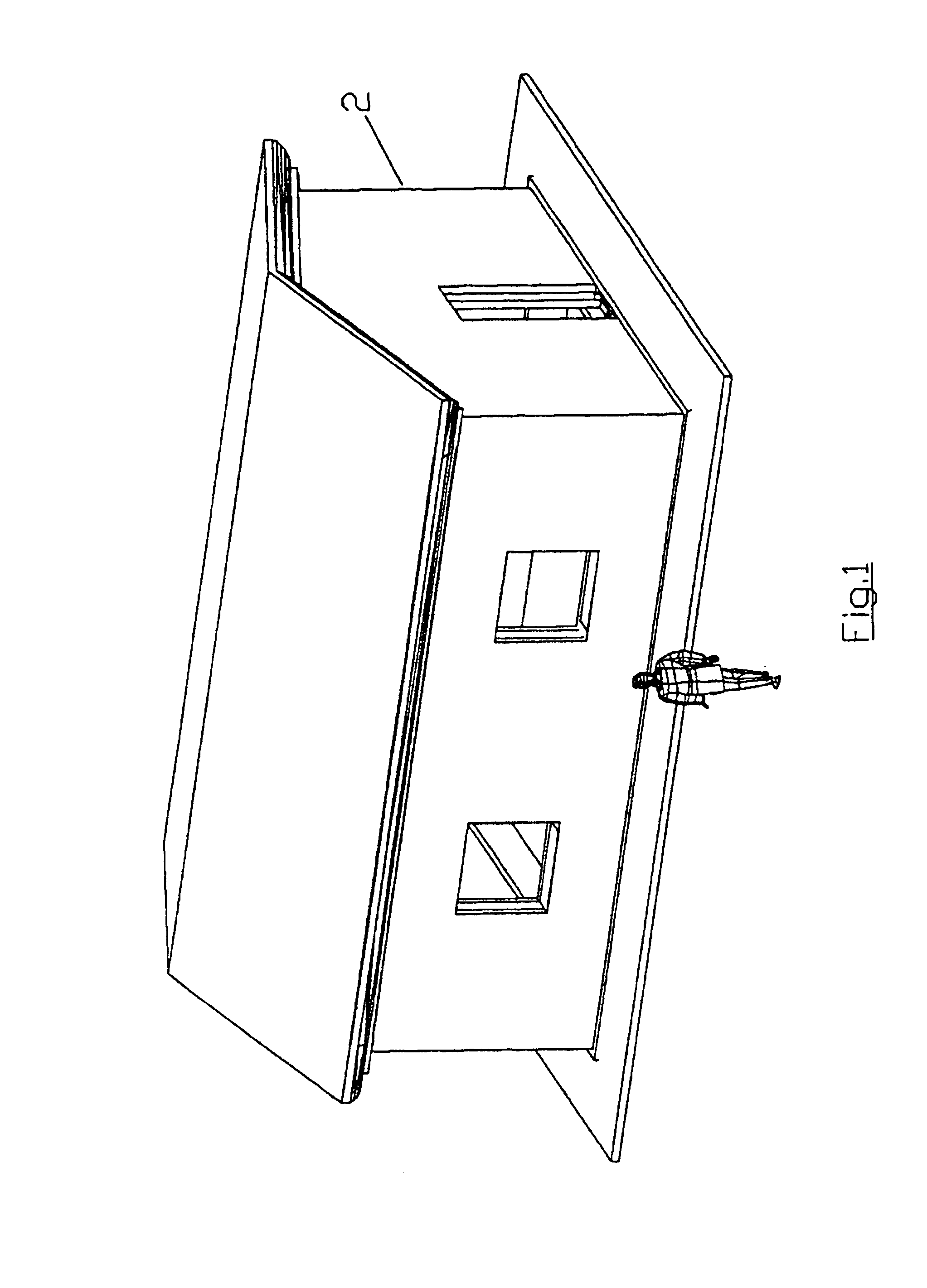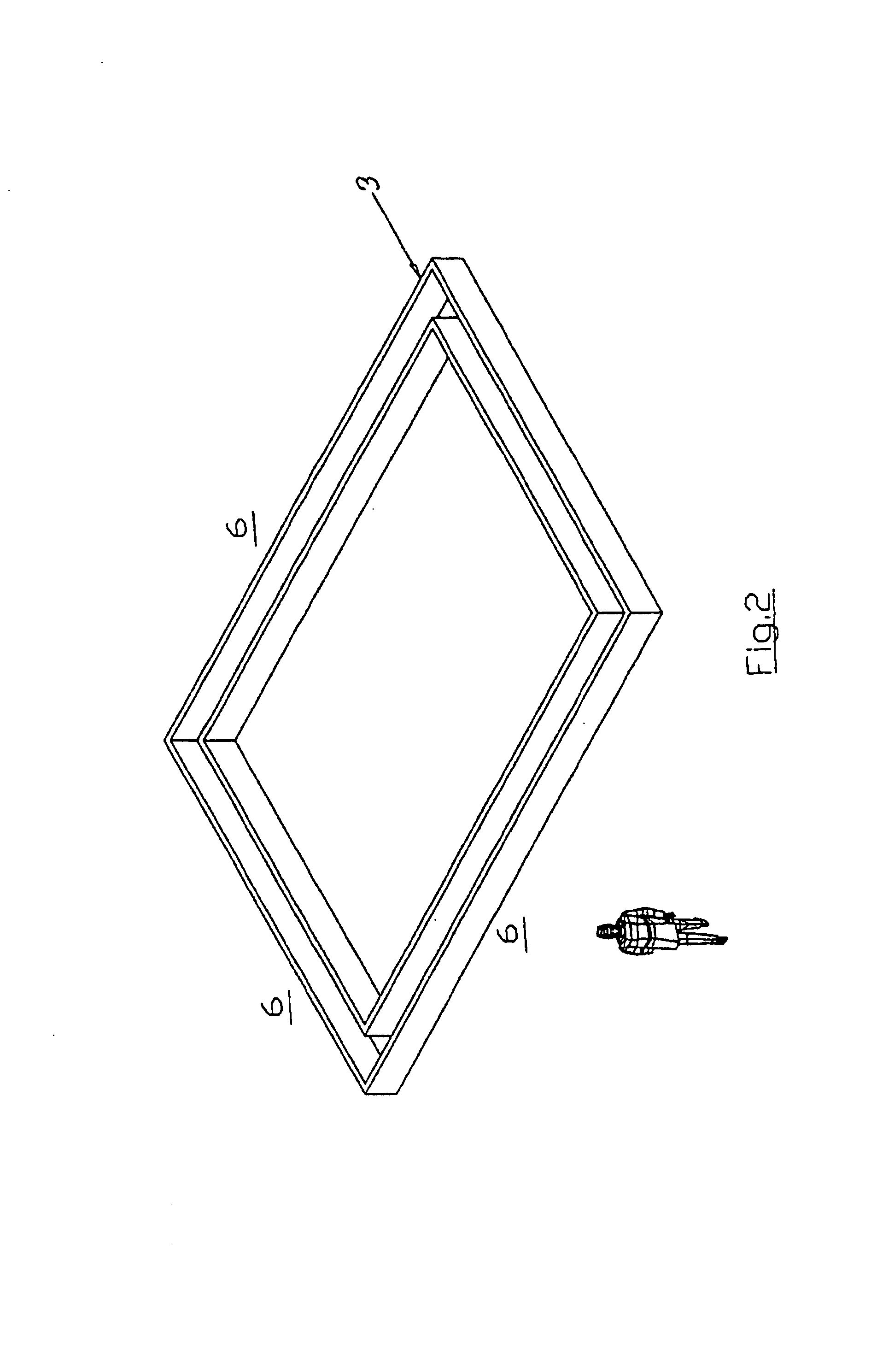Method of manufacturing and analyzing a composite building
a composite building and manufacturing technology, applied in nuclear engineering, nuclear elements, using mechanical means, etc., can solve the problems of insufficient proof, and insufficient use of buildings, so as to reduce energy consumption, reduce energy consumption, and easy assembly of materials
- Summary
- Abstract
- Description
- Claims
- Application Information
AI Technical Summary
Benefits of technology
Problems solved by technology
Method used
Image
Examples
Embodiment Construction
[0108]The manufacture or construction of the inventive building starts with the creation of a 3-Dimensional; “solid” model of the building in a computer assisted drafting (CAD) program in a computer. Suitable CAD programs are AutoCAD™, ProE™, Solid Works™, Inventor™, etc. The building is then sliced in parallel, usually vertical planes. These planes can correspond to various thicknesses of the slices, preferably of a size to be manhandled.
[0109]These slices of the building are then created by using foam, such as, expanded polystyrene (EPS). The foam elements that make up a slice can be cut from commercially available sizes of foam, such as slabs of 1 to 36 inches thick and 4 feet×8 feet or 4 feet×8 feet. The cutting can be performed by hand, machine or computer assisted manufacturing (CAM) program and a computer driven machine. The foam can be cut by hot wire or other suitable cutting process. The slice can be made by cutting elements which are then glued or otherwise joined togethe...
PUM
 Login to View More
Login to View More Abstract
Description
Claims
Application Information
 Login to View More
Login to View More - R&D
- Intellectual Property
- Life Sciences
- Materials
- Tech Scout
- Unparalleled Data Quality
- Higher Quality Content
- 60% Fewer Hallucinations
Browse by: Latest US Patents, China's latest patents, Technical Efficacy Thesaurus, Application Domain, Technology Topic, Popular Technical Reports.
© 2025 PatSnap. All rights reserved.Legal|Privacy policy|Modern Slavery Act Transparency Statement|Sitemap|About US| Contact US: help@patsnap.com



